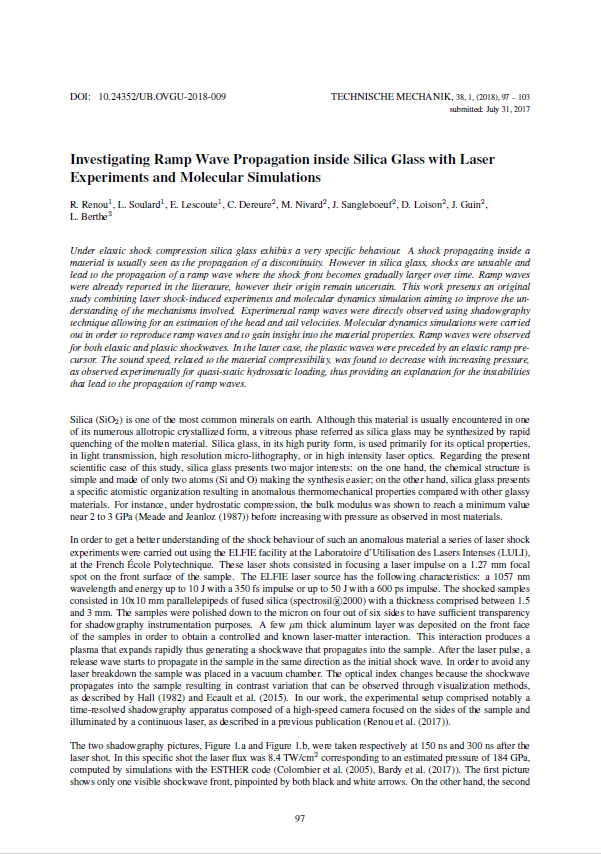Investigating Ramp Wave Propagation inside Silica Glass with Laser Experiments and Molecular Simulations
DOI:
https://doi.org/10.24352/UB.OVGU-2018-009Abstract
Under elastic shock compression silica glass exhibits a very specific behaviour. A shock propagating inside a material is usually seen as the propagation of a discontinuity. However in silica glass, shocks are unstable and lead to the propagation of a ramp wave where the shock front becomes gradually larger over time. Ramp waves were already reported in the literature, however their origin remain uncertain. This work presents an original study combining laser shock-induced experiments and molecular dynamics simulation aiming to improve the understanding of the mechanisms involved. Experimental ramp waves were directly observed using shadowgraphy technique allowing for an estimation of the head and tail velocities. Molecular dynamics simulations were carried out in order to reproduce ramp waves and to gain insight into the material properties. Ramp waves were observed for both elastic and plastic shockwaves. In the latter case, the plastic waves were preceded by an elastic ramp precursor. The sound speed, related to the material compressibility, was found to decrease with increasing pressure, as observed experimentally for quasi-static hydrostatic loading, thus providing an explanation for the instabilities that lead to the propagation of ramp waves.





